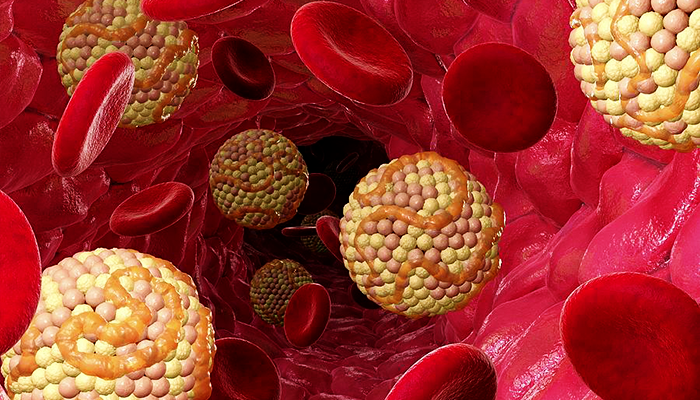Chelation (pronounced key-LAY-shun) is the use of a chemical substance to bind molecules, such as metals or minerals, and hold them tightly so they can be removed from the body. Chelation therapy removes excess or toxic metals or minerals to minimize their effects on the body. The therapy was first used in the 1940’s by the Navy to treat lead poisoning.
The most common form of chelation therapy uses a man-made amino acid called EDTA (ethylene diamine tetra-acetic acid). EDTA removes heavy metals and minerals from the blood, such as lead, iron, copper, and calcium, and is approved by the U.S. Food and Drug Administration (FDA) for treating lead poisoning and poisoning from other heavy metals.
Although it is not yet approved by the FDA to treat arteriosclerosis (hardening of the arteries), EDTA chelation is used to improve circulation and treat this disorder by removing calcium deposits and plaques from the arteries.
Chelation therapy, used for arteriosclerosis, was considered a controversial, non-standard treatment. However, in results which stunned cardiologists, a 2012 study showed that chelation therapy for heart disease was found to be very effective at preventing heart problems.
The patients in the study had had heart attacks, and were assigned to receive either a placebo or a series of intravenous drug infusions called chelation therapy, an unorthodox treatment that has long been looked down upon by cardiologists.
In the report — the first large, long-term trial of chelation for heart patients — the therapy reduced the risk of heart attacks, deaths, strokes and other cardiovascular problems by 18%.

Safety concerns
Doctors in Integrative Medicine welcomed the new study results, which were announced at the American Heart Association’s 2012 annual meeting.
Chelation can help remove heavy metals from the body. Chelation is approved by the Food and Drug Administration for the treatment of lead poisoning, but doctors are free to use it for other purposes, such as for the treatment of atherosclerosis (plaque build-up in the arteries).
There are dangers to any therapy, including chelation therapy whether intravenous (IV) or given orally.
Dangers
-
Low Calcium Levels: Chelation therapy removes all heavy metals, including calcium. If the IV therapy is given too quickly (should be given over 3-4 hours), low calcium levels can cause weakness, drop in blood pressure and abnormal and potentially fatal heart rhythms.
-
Chelation Therapy is an Alternative therapy. Many patients may wish to believe that Chelation therapy could/would replace traditional therapies such as angioplasty or by-pass surgery to treat established plaque formation. Chelation therapy should only be used in as an additive therapy to the established traditional therapy.
Some doctors worry patients will hear only the positive results of the study and not the possible dangers, and would opt for it over proven treatments such as bypass surgery.
Dangerously low calcium levels
According to the Mayo Clinic, some doctors think chelation helps heart patients because the medication which is being infused into patients binds to calcium in their clogged arteries, sweeping it away.
But “sweeping” calcium away is a double-edged sword. While it might help unclog coronary arteries, it might also lead to deadly low calcium levels in the blood, as happened to the three people whose deaths were described in the CDC report.
That’s one reason why the National Institutes of Health required that the infusions be done at a slow rate — over a period of three hours or more — so problems like low calcium levels could be caught easily.
In a series of letters to the study’s authors, the Department of Health and Human Service’s Office for Human Research Protection cited several concerns about the study, including that the researchers hadn’t followed the rules about doing the infusions at a slow rate.
In one letter, the government overseers expressed concern that infusions were performed in “shorter than recommended” times in 440 instances, involving 251 subjects.
The study was stopped from September 2008 until June 2009 to respond to the government’s concerns.
The future of chelation
The Integrative Medicine world hopes this 2012 study results will help persuade insurance companies to start paying for chelation.
But insurance companies usually only pay for treatments that are FDA approved — and there’s little chance the FDA would approve chelation for heart disease based on this study, experts say.
Chelation Do’s and Don’ts
Chelation should only be used by an experienced and knowledgeable physician. Patients should ask their doctor how often they use chelation therapy. As well, patients should ask their doctor how many adverse reactions have occurred in their center over the past year.
Patients should know that the doctor is qualified and trained to deal with any adverse reaction or emergency which may arise.
Patients should understand that chelation therapy is an alternative therapy working in conjunction with traditional therapies to treat atherosclerosis. Chelation therapy does not replace any traditionally used method for the treatment of heart disease and arterial plaques.
Patient should be open for the physician giving the chelation therapy and the cardiologist to have an open discussion with the patient present to confirm opinions on the risks versus benefits of chelation therapy.





